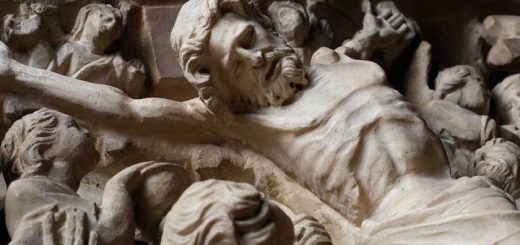Gender iniquity: "They are not the rib of anyone"
From Mosaic of peace, N ° 4 April 2020
"La inferiorizzazione del femminile è (stata) interpretata come inferiorità innata. E così come il pesce non ha consapevolezza dell’acqua in cui nuota, di ciò che è opera dell’uomo si nasconde l’autore. Un’iniquità, del resto, di cui egli non è quasi mai consapevole, perché gli stereotipi culturali lo proteggono dal percepirsi sotto questa luce: una banalità del male, sotto una nuova – ma insieme antica – veste. Paradossalmente lo stesso genere artefice di tali assetti, ne subisce i contraccolpi".
Questa citazione è tratta dall’introduzione di Paola Cavallari al volumetto da lei stesso curato “Non sono la costola di nessuno. Letture sul peccato di Eva” (Gabrielli Editori, 2019), che raccoglie gli interventi di diversi studiose e studiosi per denunciare, grazie a un’ermeneutica e a un’esegesi dai tratti scientifici, l’uso strumentale di diversi passi biblici. Versetti, specie alcuni di Genesi, che hanno giustificato per secoli i tanti stereotipi di genere che hanno visto la donna in posizione di netta subordinazione e sottomissione rispetto all’uomo (genere maschile) anche perché ritenuta colpevole dell’entrata del male e del peccato nel mondo, dopo l’iniziale condizione paradisiaca dell’essere umano.
Ma, come chiaramente espresso nelle parole di Paolo Ricca, Genesi 2, 4b-3,24 è stato a lungo ritenuto “un testo chiave” che spiega e fonda tutto il resto del discorso biblico. In realtà si tratta di “an extremely marginal text, to which no explicit reference is made throughout the ancient testament".
It is important that some of the six essays that make up the book in question are precisely drawn up by men as this editorial staff testifies to the male will to get involved, to put in question those mental, social and cultural categories that have ousted the woman from cardinal roles of society, beyond those made up of being a mother and wife, duties within which the praised female genius has often been traced back.
Fondamentale, per le finalità del lavoro, la trasversalità degli interventi comprendenti il cristianesimo della Riforma (Lidia Maggi, Paolo Ricca, Letizia Tomassone), il cristianesimo cattolico (Paola Cavallari, Lilia Sebastiani, Carlo Bolpin) e la tradizione ebraica (Gianpaolo Anderlini, Brunetto Salvarani, studiosi comunque non ebrei).
The analysis of biblical steps are props in support of the process of "conscientization"Of the woman who laboriously took note of the cultural violence to which she was subjected to that not rarely, it has passed through. This process passes through acts of "disobedience” ben documentati dalla relazione di Letizia Tomassone, attraverso i quali le stesse donne valicano “gli spazi in cui dovrebbero contenersi” creando quella paura, da parte del maschio, di perdere la posizione di controllo.
Furthermore, it is essential to redesign the image of God that emerged from the aforementioned stereotypes, that of a male universal that includes and conforms to one's androcentrism the representation of the divinity. A humanization of the male is needed, because the God of the first testament and the God of the Gospel, also as expressed in the figure of Jesus, is a god before or beyond any sexual determination, who for love created man and woman by placing them in relation to one with
the other.
A relationship that does not flatten the two subjects but enhances them in their specificities. Not in the sense of that complementarity justifying the subordination of the female male but in the meaning that in reality enhances the greatness and beauty of both.






